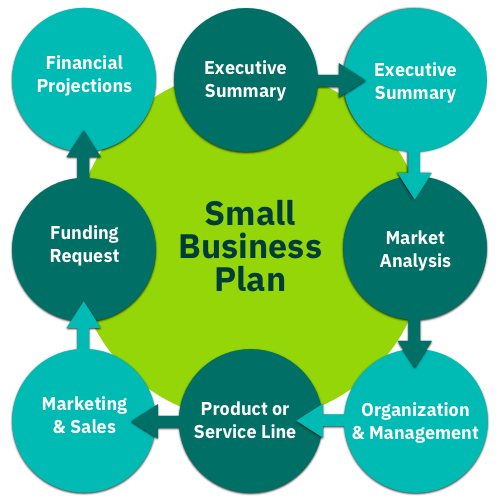Securing investment represents a critical milestone for any entrepreneur, demanding a meticulous approach to demonstrating your project’s viability. To effectively convince investors of your funding worthiness, you must be thoroughly prepared and possess unwavering confidence in your vision and execution capabilities.
This entails presenting a well-structured pitch that clearly outlines your business’s uniqueness, substantiates its potential through solid market research, and showcases a robust business model. Demonstrating significant traction and a capable team further solidifies your credibility.
Ultimately, a compelling and transparent presentation of your business plan can foster genuine investor belief in your project’s potential, making it possible to attract the crucial funding needed for growth and success.
Understanding the Investor's Perspective

Investors seek more than just innovative business ideas; they seek clear evidence of potential success and a well-defined path to achieving it. To effectively capture their interest, your pitch should address several key aspects:
- Value Proposition: It is crucial to articulate what sets your business apart and why it is positioned for success. This involves:
- Clearly defining the problem your business addresses.
- Identifying your target market and its needs.
- Explain how your solution is unique and better than existing alternatives.
- Business Model: Your pitch must showcase a comprehensive and viable business model. This includes:
- Detailing how your company plans to generate revenue.
- Presenting a well-defined path to profitability.
- Outlining your revenue streams and providing financial projections demonstrating potential growth and sustainability.
- Traction: Demonstrating traction is vital to validating your business concept. Provide concrete evidence of progress, such as:
- User growth metrics.
- Revenue figures and financial performance.
- Strategic partnerships and collaborations.
- Milestones achieved in product development or market expansion.
By addressing these elements comprehensively, you will present a compelling case that highlights your business’s potential and reassures investors of its viability and growth prospects.
Crafting a Compelling Pitch Deck

A pitch deck is crucial to your fundraising strategy and is designed to capture investor interest and convey your business’s potential. To ensure it is compelling and comprehensive, your pitch deck should be well-structured, visually engaging, and rich in pertinent details. Here’s a detailed guide on what to include:
- Introduction: Start with a powerful opening that grabs the investor’s attention. Clearly articulate your mission and vision, and outline your business’s unique value. Make a compelling case for why your business deserves investment.
- Problem and Solution: Clearly define the problem your business aims to solve. Then, present your solution and explain how it effectively addresses the issue. Support your claims with relevant data and real-world examples to add credibility.
- Market Opportunity: Thoroughly analyse the market size and its growth potential. Show that you deeply understand market dynamics, including critical trends, customer needs, and how your business fits into this landscape.
- Competitive Analysis: Evaluate your competition and highlight your competitive edge. Explain what differentiates your business from others and detail your strategies for maintaining this competitive advantage.
- Business Model and Financials: Offer a detailed overview of your business model, including your pricing strategy, cost structure, and financial projections. If available, include historical data and provide forecasts demonstrating financial viability and growth potential.
- Team: Present the qualifications and experience of your team members. Investors are as interested in the people behind the business as in the idea itself, so emphasise the skills, expertise, and track record that make your team uniquely capable.
- Funding Requirements: Specify the amount of funding you seek and detail how it will be utilised. Provide a breakdown of how the funds will be allocated and the anticipated outcomes or milestones.
- Call to Action: Conclude with a solid call to action, encouraging investors to take the following steps. Provide clear instructions on how they can contact you or engage further.
Overcoming Procrastination and Building Confidence
Procrastination in pursuing funding is often a sign of deeper issues, such as fear of rejection or lack of confidence. Address these challenges head-on:
- Acknowledge and Address Fears: Identify and confront your fears about rejection, loss of control, or failure. Understanding these fears can help you develop strategies to overcome them.
- Set Clear Goals and Timelines: Break down your funding strategy into manageable tasks with clear deadlines. This approach will help you stay focused and make steady progress.
- Seek External Support: Consider working with mentors, advisors, or consultants who can provide objective feedback and guidance. Their expertise can help you refine your pitch and approach.
- Practice Resilience: Building resilience is crucial for overcoming obstacles and maintaining motivation. Learn from feedback and setbacks and use them as opportunities for growth.
Leveraging Your Independence
While being a self-starter is highly valuable, knowing when to seek help is crucial for maximising effectiveness. Here’s a comprehensive approach to balancing your independence with strategic collaboration:
- Delegate Effectively:
- Identify Expertise: Determine which tasks others can handle based on their skills and expertise.
- Allocate Responsibilities: Assign tasks that align with team members’ strengths to optimise productivity.
- Focus on Strategy: You can concentrate on high-impact strategic decisions and growth opportunities by delegating routine or specialised tasks.
- Build a Strong Network:
- Cultivate Relationships: Develop connections with advisors, industry experts, and potential partners.
- Seek Support and Insights: A robust network offers valuable support, insights into industry trends, and potential business opportunities.
- Leverage Opportunities: Use your network to gain advice, resources, and collaborations that can propel your business forward.
- Invest in Professional Help:
- Hire Experts: Consider hiring professionals for critical areas like financial modelling or legal advice.
- Enhance Pitch Quality: Their specialised knowledge can improve the accuracy and effectiveness of your pitch, making it more compelling to investors.
- Increase Success Chances: Professional assistance can help address complex issues, increasing the likelihood of securing investment.
Preparing for Investor Questions

Investors are likely to have questions and concerns about your business. Be well-prepared to address these effectively:
- Anticipate Questions:
- Prepare Answers: Develop responses for common investor queries, including your business’s competitive advantage, market potential, and financial forecasts.
- Rehearse Key Points: Ensure your answers are well-rehearsed and backed by data to convey confidence and credibility.
- Be Transparent:
- Provide Honest Responses: Offer clear, detailed answers to build trust and demonstrate a thorough understanding of your business.
- Show Comprehensive Knowledge: Transparency about your business’s challenges and opportunities fosters investor confidence.
- Show Adaptability:
- Highlight Flexibility: Emphasize how your business can adapt to changes and overcome challenges.
- Demonstrate Resilience: Investors appreciate a business that can pivot effectively and maintain resilience in the face of obstacles.
Embracing Mindfulness and Self-Awareness

Mindfulness is a powerful approach for managing stress and enhancing decision-making abilities. Incorporating mindfulness practices into your routine can improve focus, emotional resilience, and overall well-being. Here’s how to effectively integrate mindfulness into your life:
- Practice Mindfulness:
- Engage in Mindfulness Exercises: Incorporate meditation, deep breathing, and mindful walking into your daily routine to stay present and reduce stress.
- Use Techniques for Clarity: Employ practices such as journaling to explore and address underlying anxieties and enhance mental clarity.
- Consistency is Key: Make mindfulness a regular part of your life to build resilience and maintain emotional balance.
- Reflect on Beliefs:
- Examine Limiting Beliefs: Identify and evaluate negative beliefs or mental blocks that might impact your confidence and performance.
- Challenge and Reframe: Work on changing these beliefs by challenging their validity and reframing them more positively.
- Boost Confidence: Addressing and overcoming these mental barriers can help you progress with greater effectiveness and self-assurance.
- Seek Support:
- Work with Professionals: If you encounter persistent issues, consider seeking support from a coach or therapist.
- Develop Strategies: Collaborate with professionals to develop tailored strategies for overcoming challenges and achieving personal growth.
- Utilise Resources: Use available resources to address deeper psychological or emotional issues and enhance your overall well-being.
Conclusion: Your Path to Success
Convincing investors of your funding worthiness necessitates a multifaceted approach that integrates thorough preparation, unwavering confidence, and strategic thinking. Begin by meticulously preparing your pitch, ensuring it clearly articulates your business’s value proposition and potential for growth.
Address any personal doubts or uncertainties that may undermine your confidence, as investors are keen to back individuals who exhibit self-assurance and clarity. Craft a compelling narrative highlighting your business’s strengths and opportunities, and seek external support from mentors or industry experts to bolster your pitch.








